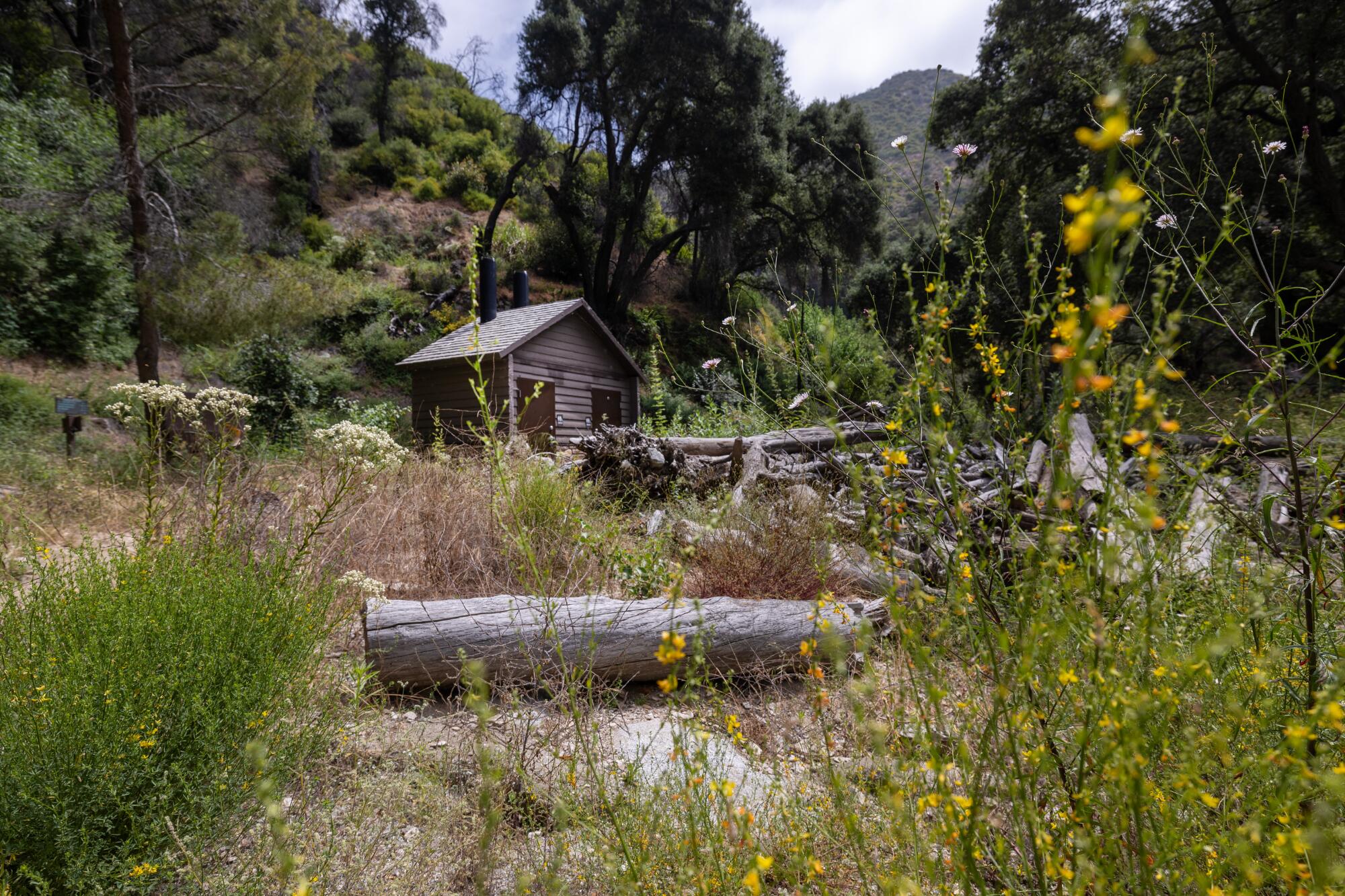
Joanie Kasten remembers peering out the kitchen window of her 108-year-old cabin in the Angeles National Forest and seeing a woman “going potty” near a large rock.
“Poor thing,” the 74-year-old thought. “She doesn’t know I’m right here.”
That was before the fierce Bobcat fire tore through Big Santa Anita Canyon in 2020, closing it to the public. Much of the canyon — which includes the popular Chantry Flat recreation area — is slated to reopen Oct. 1, and some who live there in historic cabins are worried that it’s going to open a floodgate of feces and urine.
Aggressive and impactful reporting on climate change, the environment, health and science.
That’s because seven toilets in and around the highly trafficked canyon in the San Gabriel Mountains vanished over the last six years — about half the facilities in the area, according to information provided by the U.S. Forest Service. Some were removed to comply with federal water safety regulations; others because they exceeded their lifespan. The fire claimed two. The loss climbs to nine if you factor in another two that were replaced but are currently unusable.
That leaves seven (and one urinal) in operation, including two composting toilets at a hike-in campground. Five of the area’s seven toilets are clustered at the Chantry Flats Picnic Area, a nexus for the most popular trails. Officials plan to install two portable toilets before the reopening.
It’s not just the canyon that’s lost restrooms in recent years. The Environmental Protection Agency ordered the Forest Service to close more than 60 campground pit toilets across seven of California’s national forests in 2018 to adhere to the Safe Drinking Water Act. Other toilets of the same type — known unflatteringly as large-capacity cesspools — were removed proactively in the Angeles National Forest, officials said. Many cesspools were replaced with other types of toilets, but not all.
1
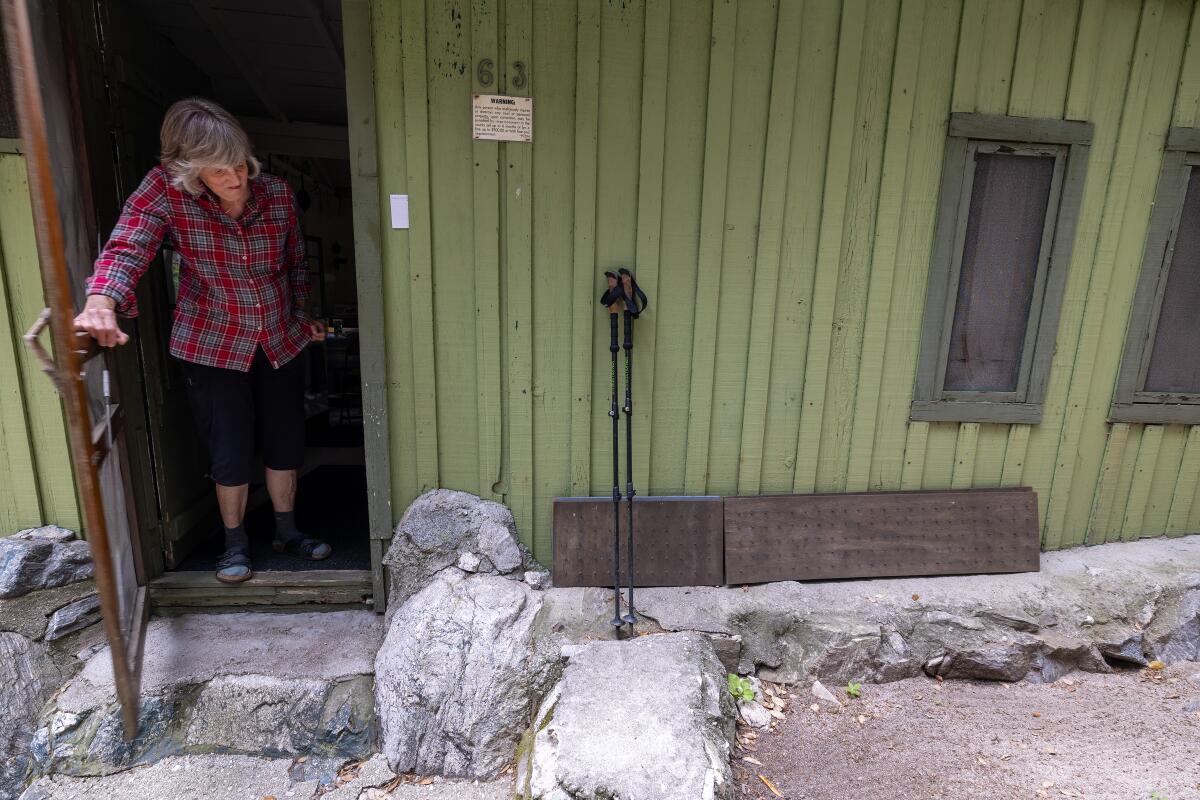
2

3
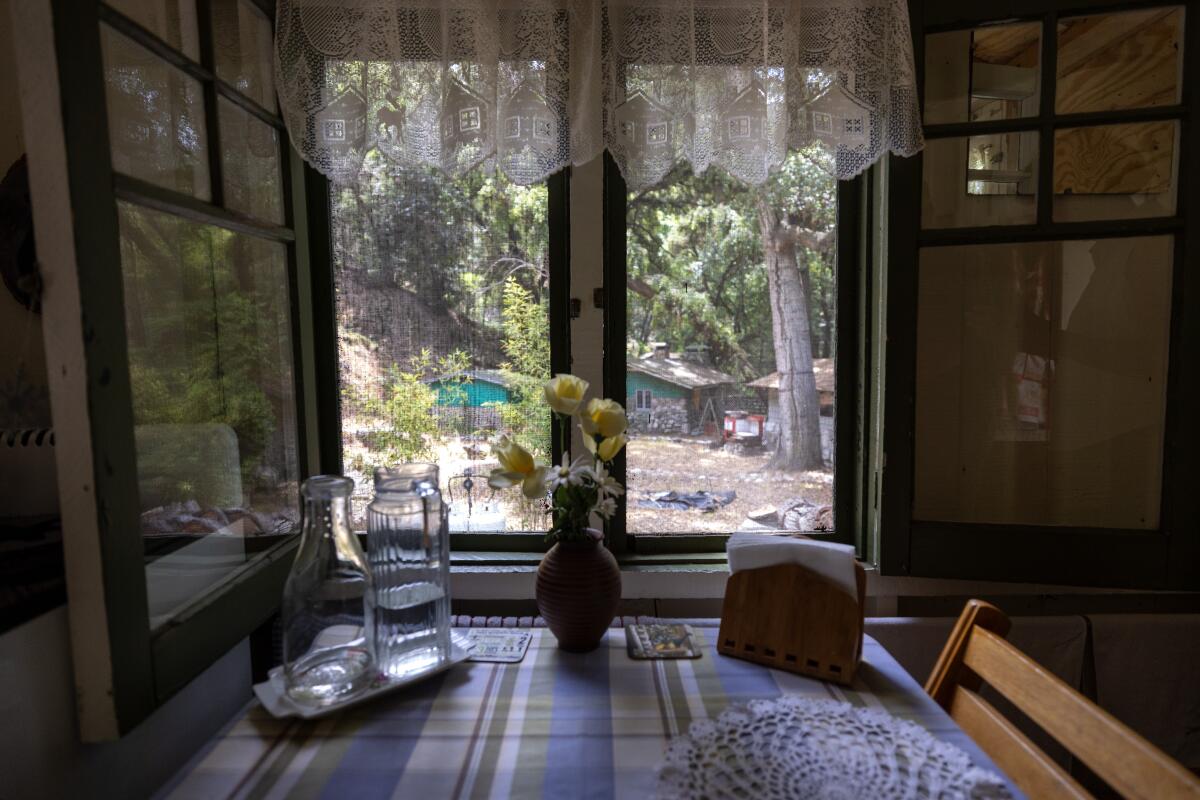
1. Joanie Kasten opens the front door to her small cabin in Big Santa Anita Canyon. 2. A ceramic plate in a hutch inside the Kastens’ cabin. 3. The view from the dining area of the Kastens’ cabin.
Forest Service officials say it isn’t practical or feasible to install facilities in some difficult-to-access places — pointing to accessibility regulations and technological challenges. Besides, officials said, it’s not unusual for restrooms to be located in centralized areas on public lands, and it’s incumbent on the public to “leave no trace.”
“If you go hiking, there’s not a lot of bathrooms along trail systems,” said Forest Service District Ranger Ray Kidd, who manages the canyon. “They’re at typically trailheads, parking lots, places where we can get a pump truck or sewage truck to service those facilities.”
Cabin owners argue that visitors have and will continue to poop and pee in the woods without following best practices. If the agency doesn’t step up, they say, they’ll be left to literally clean up the mess — and fear contamination of waterways that snake through the area.
Justin McInteer, 51, said that before the area closed, he would “just go along and pick up s—.”
“It’s disgusting,” said McInteer, an artist who bought a cabin with his partner in the Winter Creek area about five years ago. “I don’t want to make that my habit by any means.”
“If they’re just saying, ‘No, we can’t do it,’ then who does?” he said. “It means that we probably will.”
Before the closure, the picturesque canyon, recently teeming with wildflowers, drew droves of hikers, mountain bikers, campers and picnickers.
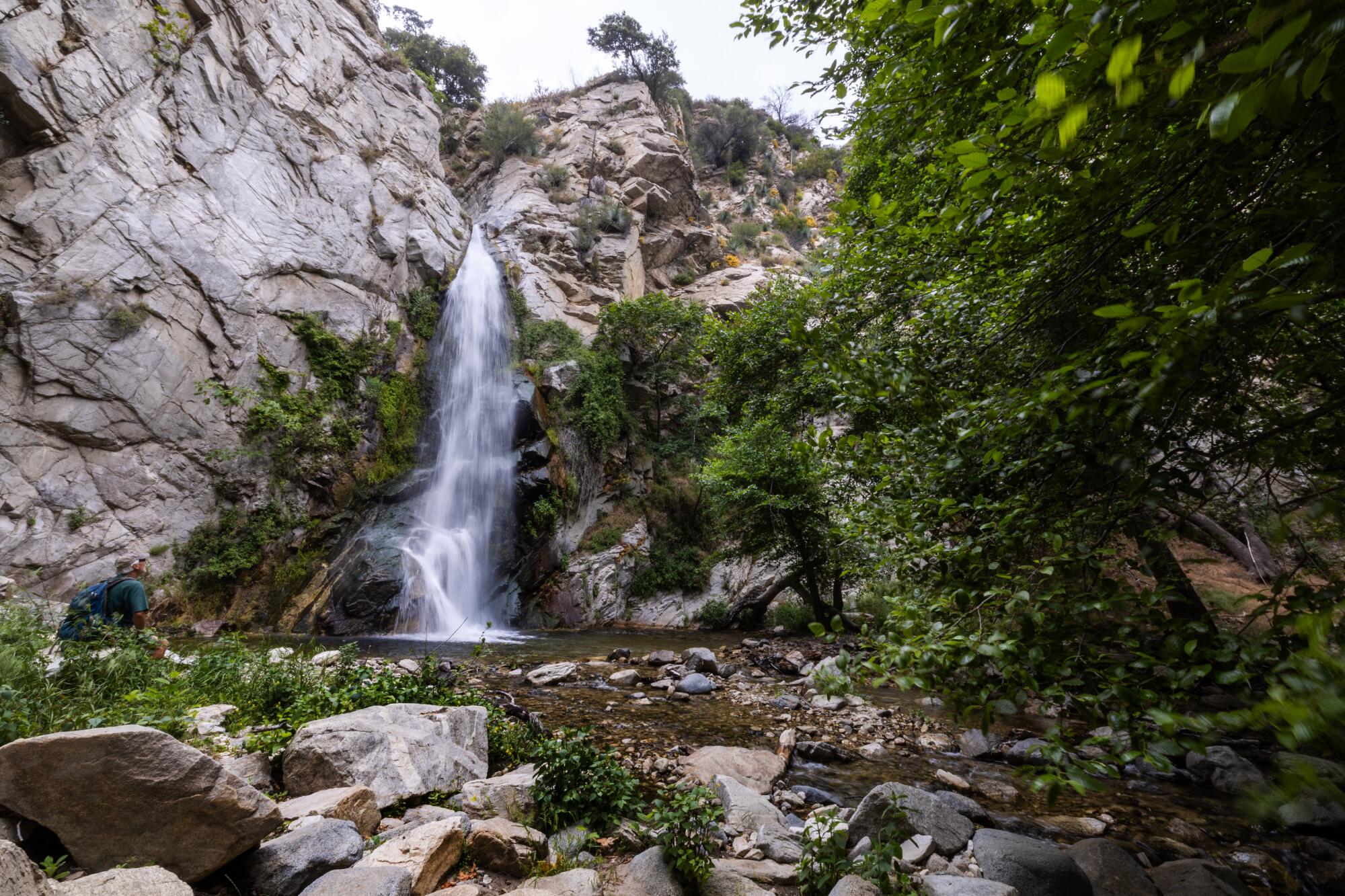
One of the main draws is Sturtevant Falls, a 50-foot cascade less than two miles from a trailhead near the Chantry Flat parking lot. “By far, the most challenging thing you encounter on this hike is finding parking,” according to californiathroughmylens.com.
One of the casualties of the EPA order were toilets considered large-capacity cesspools at Hoegee’s Trail Camp, a hike-in campground and popular picnic spot just over two miles from Chantry Flat.

Subscribers get exclusive access to this story
We’re offering L.A. Times subscribers special access to our best journalism. Thank you for your support.
Explore more Subscriber Exclusive content.
Large-capacity cesspools — which serve 20 or more people per day — release untreated sewage, which can contaminate underground sources of drinking water with pathogens, according to the EPA.
McInteer is just downstream from the Hoegee’s campground and said cabin dwellers in the area currently pull water from the nearby creek to filter and drink. But if people are defecating right next to the creek, he worries diseases could spread.
“It’s just a nightmare,” he said. “In my opinion, it’s unacceptable to open it as a campground without some kind of facilities.”
However, that’s the plan.
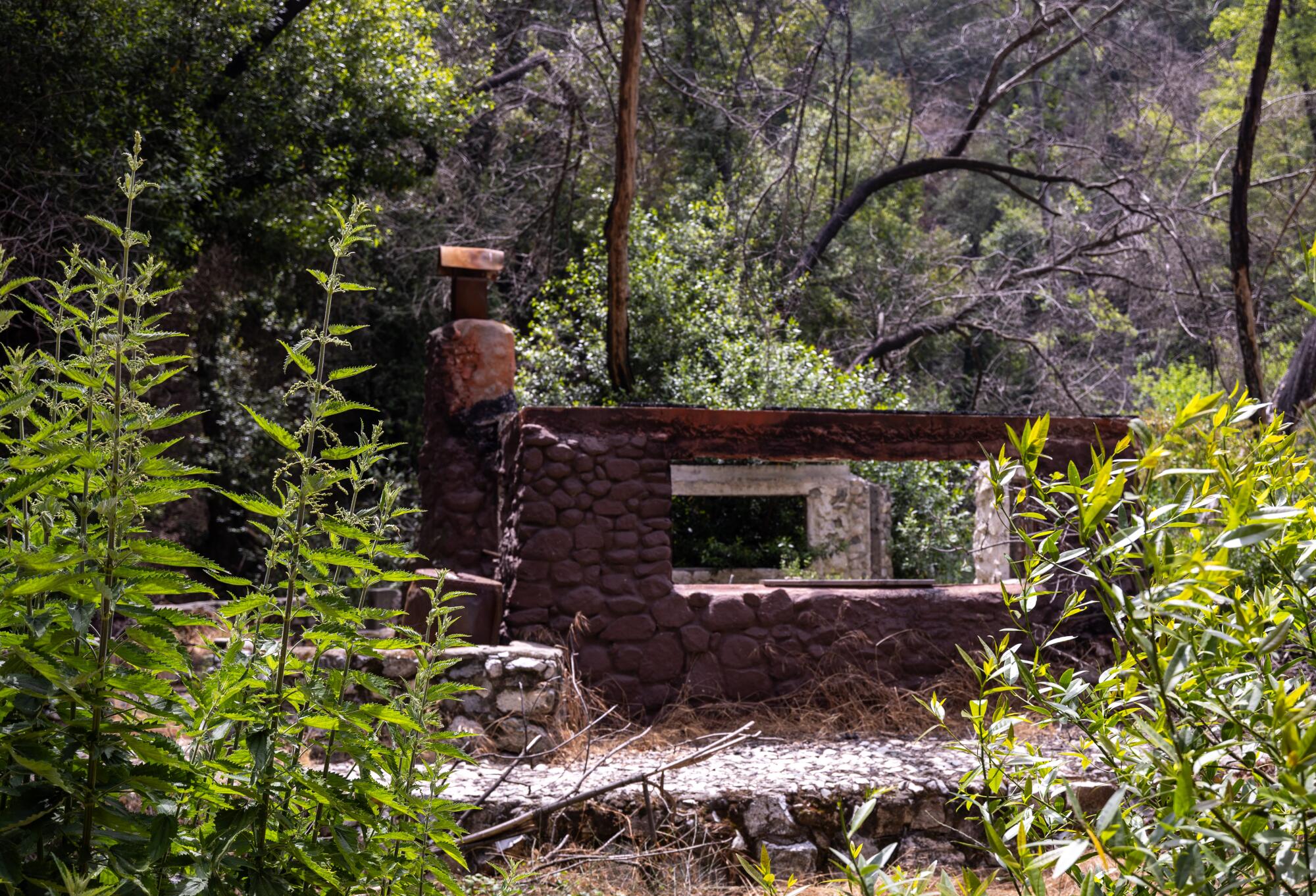
Forest Service officials said the three toilets at the campground were not replaced partly because of people throwing trash in them. Trash reduces the capacity and makes it difficult to pump sewage, Kidd said, and it’s costly to hire someone to remove the contaminated trash off the site.
Most campgrounds across the forest have restrooms, as well as road access to allow servicing, said Angeles National Forest spokesperson Dana Dierkes.
Pamela Zoolalian, a cabin owner who lives just downstream from McInteer, said she didn’t think the removal order was fully thought out.
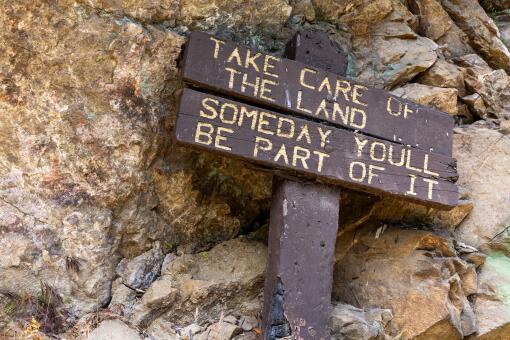
Leave No Trace
Dispose of waste properly
Deposit poop in catholes dug 6 to 8 inches deep at least 200 feet from water, campsites and trails. Cover and disguise the cathole when finished. (Some areas, like Mt. Whitney, require solid waste to be packed out.)
Pack out toilet paper and hygiene products.
(Photo: A sign Chris Kasten, 62, made as a teenager.)
Zoolalian, an outdoor educator and self-described llama wrangler, said too few people are familiar with “leave no trace” — seven principles intended to reduce humanity’s impact on the outdoors. One is to dispose of waste properly.
“So you’re going to start seeing, I think, a lot of waste in the area from people that want to go and backpack but don’t know how to do it, and are making common first-time mistakes,” Zoolalian said. “And I think the area is going to end up having a bigger environmental impact because of it, versus just something that … seeps down.”
The EPA banned large-capacity cesspools under the federal Safe Drinking Water Act in 2005, but the U.S. Forest Service continued to operate them after the closure deadline, according to the EPA.
Forest Service Pacific Southwest Region leaders agreed to close dozens identified by the EPA by the end of 2020.
Sign up for This Evening's Big Stories
Catch up on the day with the 7 biggest L.A. Times stories in your inbox every weekday evening.
You may occasionally receive promotional content from the Los Angeles Times.
Closing the facilities across California’s national forests “is necessary for the health and safety of the forest ecosystem and surrounding environment, employees and forest visitors,” Forest Service Chief Randy Moore said in a statement when the agreement was announced in 2018.
By the deadline, forest officials closed 62 cesspools in the Angeles, Eldorado, Inyo, Los Padres, Plumas, Sierra and Tahoe national forests; it cost approximately $1.4 million to remove the facilities and install replacements, according to a news release.
The EPA, through spokesperson Michael Brogan, advised those with environmental concerns to report them to the agency through an online form.
“Reports from the public have led to state and federal enforcement cases and ultimately served environmental protection well,” Brogan said in a statement.
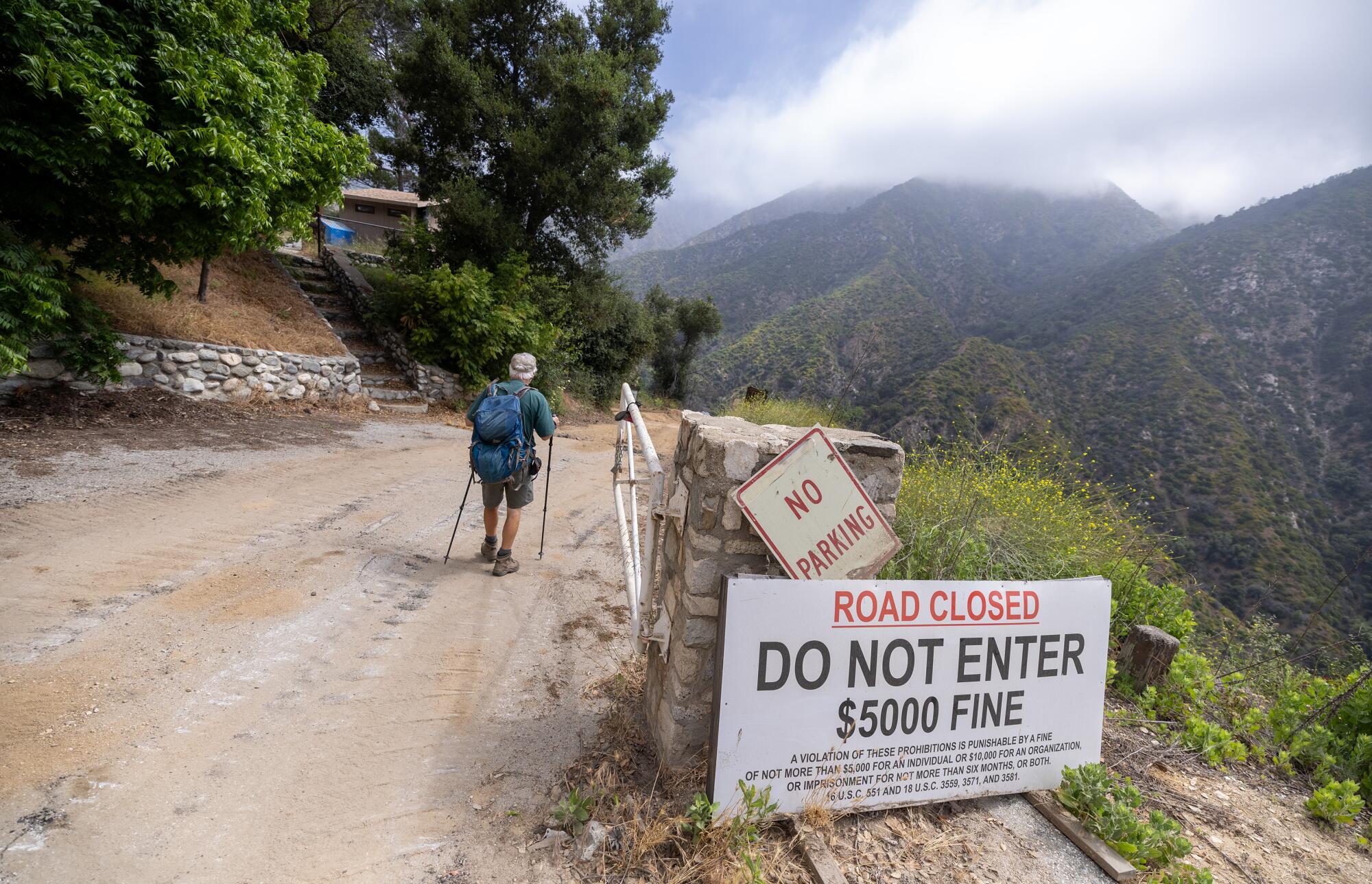
On the trek to Sturtevant Falls, gushing vigorously in May, there used to be at least two bathrooms.
One, at a junction called Roberts Camp, was removed because it was similar to the toilets targeted by the EPA. Though it was replaced by a facility called a Sweet Smelling Toilet — a type of vault toilet with a plastic liner — fierce storms in the winter of 2022-23 washed away the road that allowed it to be serviced by a pump truck. It was put in after the Bobcat fire forced the closure of the area so it’s never been used.
Kidd, who leads the Forest Service’s Los Angeles Gateway District, said officials are looking into a long-term solution, such as reestablishing the road or moving the bathroom to the other side of the creek. That won’t happen by the time the area reopens, and the agency plans to temporarily put out portable toilets.
A bathroom around the corner from the falls was wiped out by the fire, and another one above the falls — at Cascade Picnic Area — was removed. They weren’t replaced.
(Forest Service officials said the picnic area was decommissioned and there’s no record that the bathroom near the falls was constructed by the agency.)
Chris Kasten, Joanie Kasten’s husband, said his family bought a cabin in 1984, but his history in the area started 10 years before that.
He said he has spent a good portion of his 62 years hiking, serving as camp manager for Sturtevant Camp, volunteering for the Forest Service and even working at the pack station when he was in high school. Every few feet on a recent hike, he’d remark on the beauty of a tree — such as a particularly charming white alder — or recount a chapter of forest history.
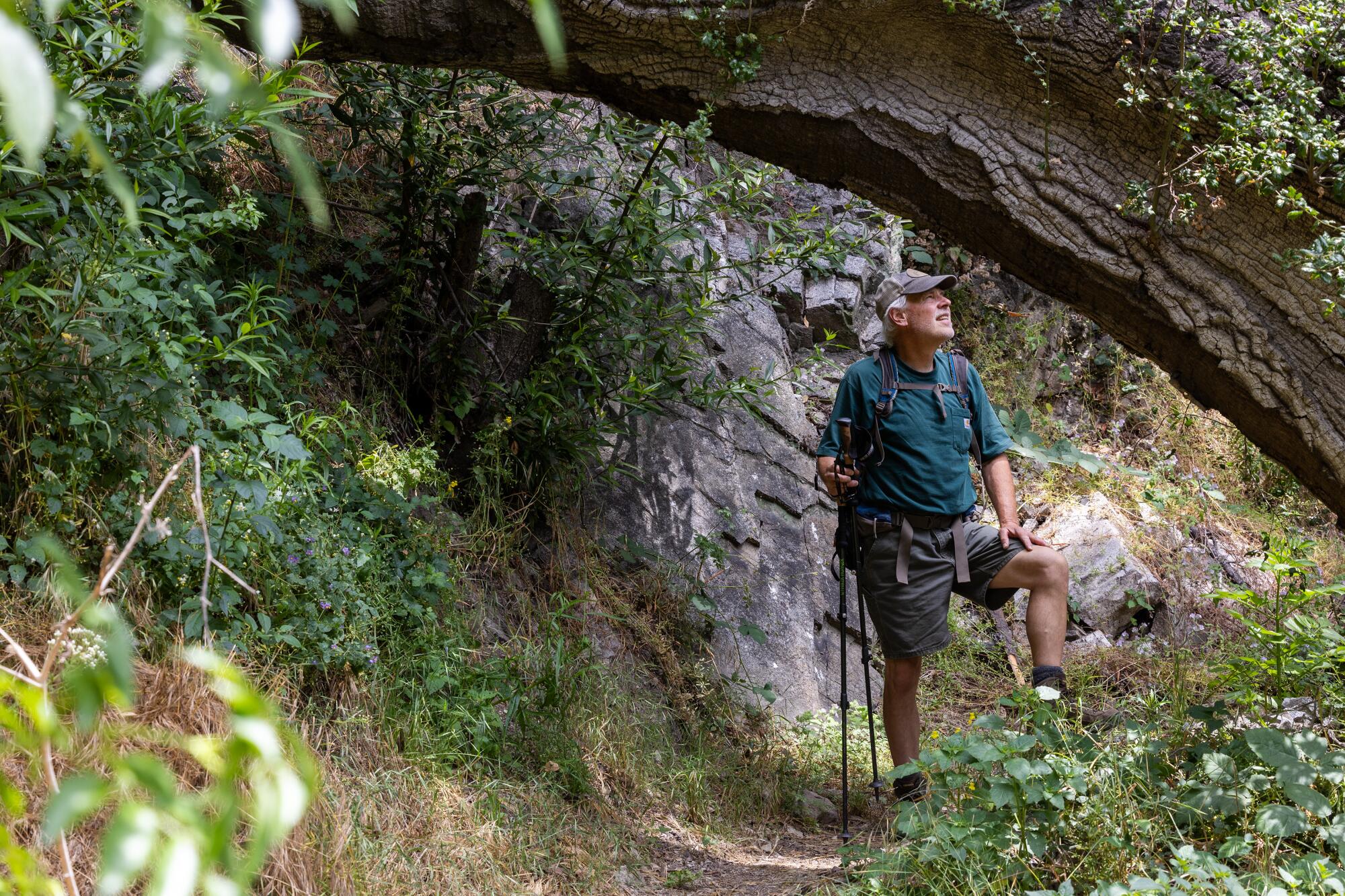
Chris Kasten called the Cascade facilities “one of the nicest outhouses ever up here” while he and his wife hiked with a Times reporter through the canyon on a perfect spring day. “Like, if you could say that an outhouse is nice.”
It was in good repair, he said, and didn’t smell.
When Joanie Kasten pointed out the rock she had seen the woman go to the bathroom near, Chris Kasten suggested education might not be sufficient to prevent something like that from happening once the crowds return.
“People want to do the right thing,” he said. “They just need the right place to do it.”
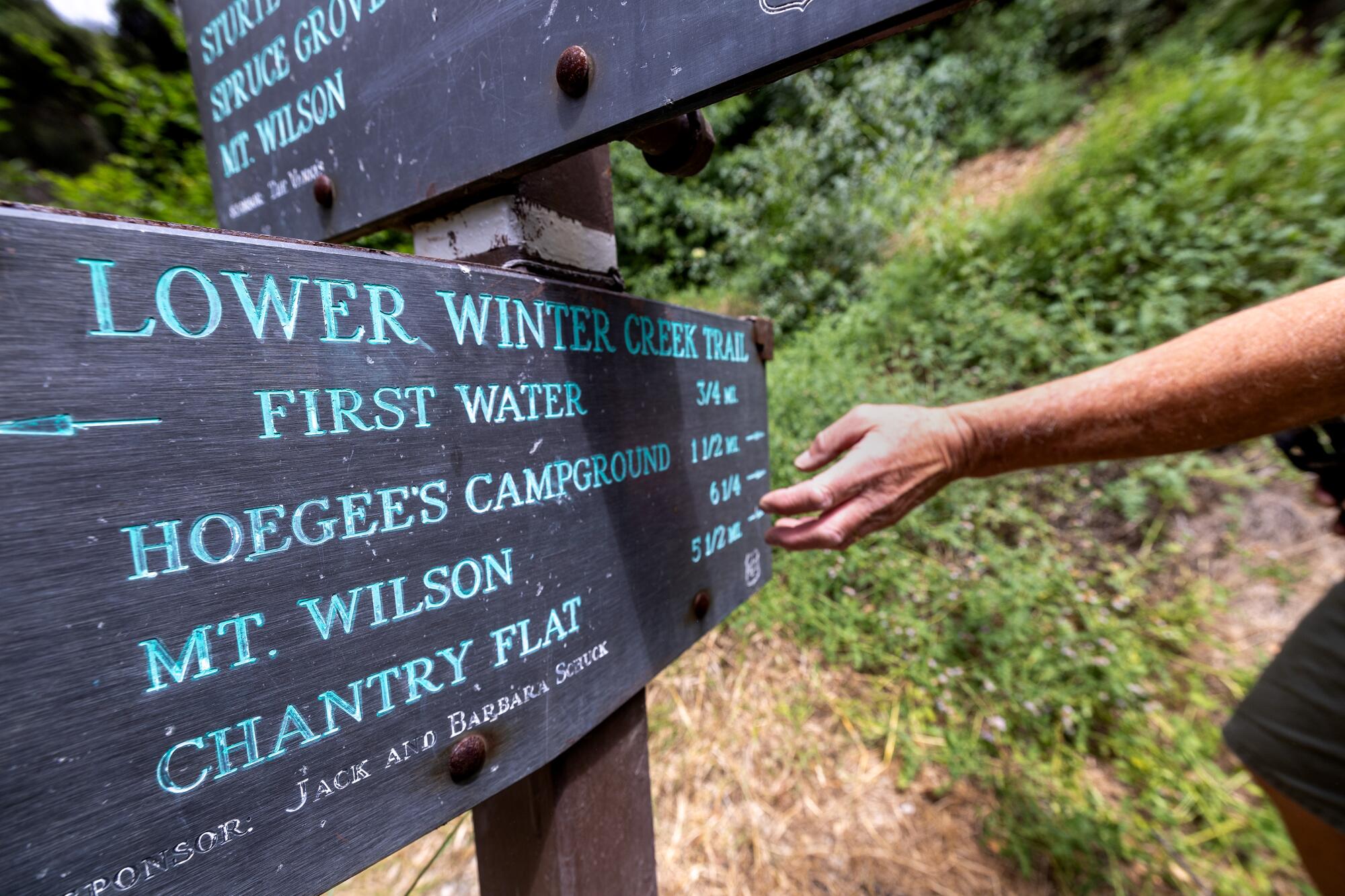
According to Shawn Troeger, a more than 30-year veteran of the Forest Service — who started at Chantry Flat in the early 1970s — asking people to employ “leave no trace” principles might work in the remote wilderness, like far-flung areas of the Sierra Nevada, but may not be practical in the canyon.
“When you’re talking about the kind of amounts of people we’re talking about, I’m not sure how you can keep a healthy environment without having sanitation facilities,” said Troeger, who retired in 2009.
But Forest Service ranks have diminished over the years. Underfunding is a consistent problem. Some areas where toilets were installed may have been along road systems that have since been absorbed by the hills.
Decisions to add facilities are based on staffing, location, maintenance needs, budget and accessibility, forest officials said. Replacing a vault toilet, the standard type in the forest, can cost $50,000 to $100,000. When a bathroom burns or is removed, money to replace it is not already in the operating budget, officials said.
It’s not a perfectly even story of loss. New restrooms have been added in other popular areas of Angeles National Forest, Kidd said, pointing to an additional toilet installed at Oak Flat Campground and another two added at Frenchman’s Flat.
Kidd said the agency is developing a plan in which additional staff will be on hand at times at the canyon to provide information to visitors. The Forest Service has also filled 17 recreation positions that will augment staff in both Kidd’s district and the nearby San Gabriel Mountains National Monument District. The agency maintains it’s difficult to hire for lower-paid positions because of the high cost of living and daunting commutes in the L.A. area.
The monument was expanded this year and some of the newly protected land now falls in Kidd’s district. However, he said the designation does not affect the canyon repair work.
There’s recognition that none of this may be enough to safeguard land so close to a megalopolis. Mirroring a national trend, the forest saw an explosion in visits during the pandemic, and numbers remain elevated.
So the agency is now in the early stages of exploring capacity limits for popular destinations. Studies looking at the issue are underway for Mt. Baldy and the north and east forks of the San Gabriel River.
“What we learn from those studies, we can apply it across the forest,” Kidd said.
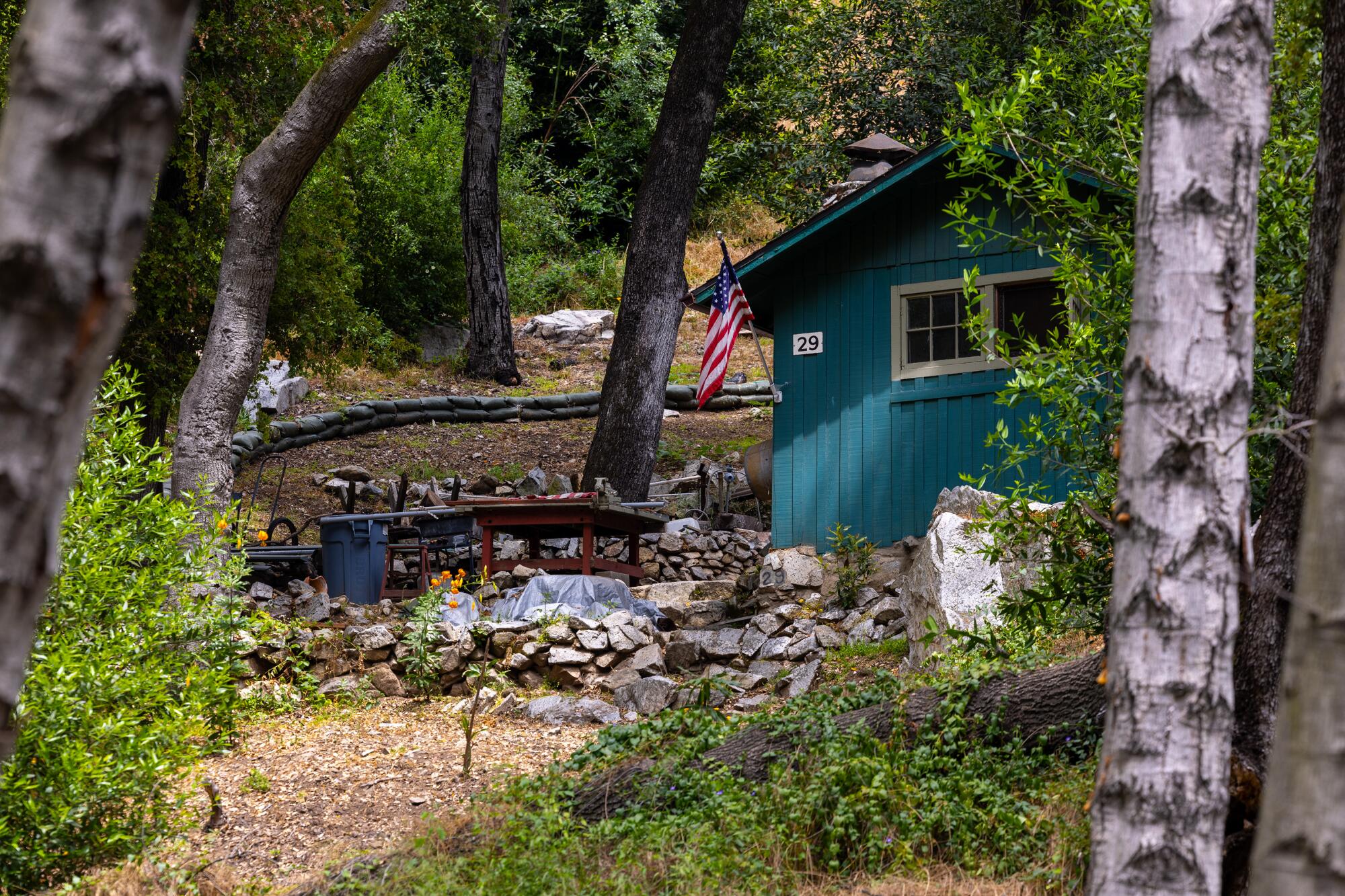
More to Read
Sign up for The Wild
We’ll help you find the best places to hike, bike and run, as well as the perfect silent spots for meditation and yoga.
You may occasionally receive promotional content from the Los Angeles Times.









